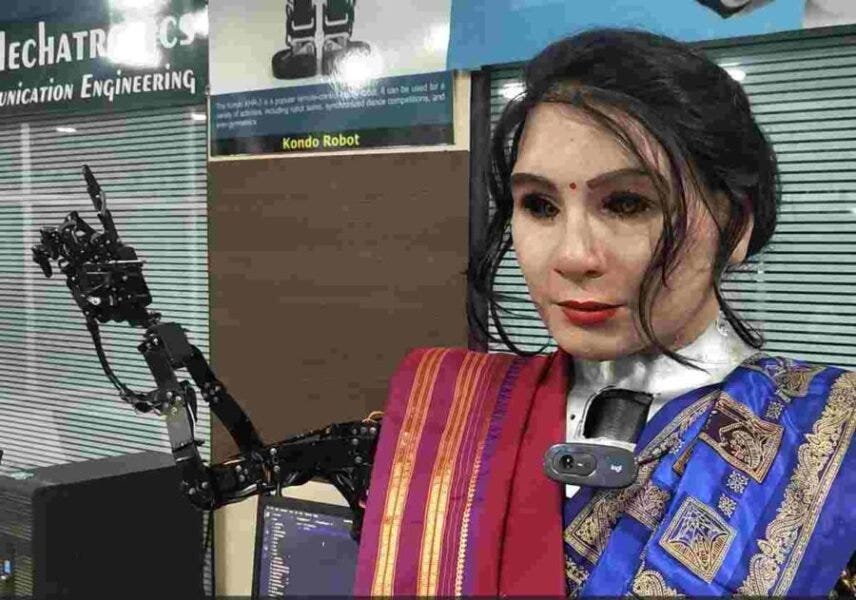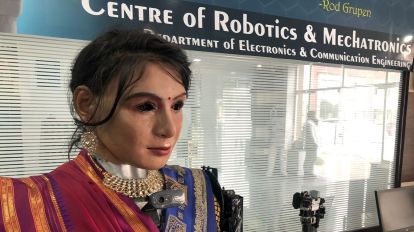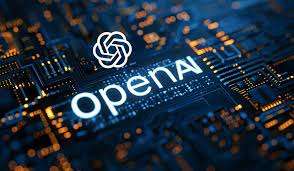Anushka is the latest example of the enduring frugal innovation seen in Indian engineering colleges like KIET.

When most science fiction enthusiasts think of humanoid robots, they often imagine something from an Isaac Asimov novel or a chillingly life-like creation like Dolores from the television series Westworld. With the emergence of generative AI as well as existing social robots like Sophia developed by Hanson Robotics, a future with fully-realised robots doesn’t seem distant. But the journey towards this reality can be equally thrilling.
I was both excited and sceptical about meeting with Anushka, the humanoid robot built by a team of students and professors at the Krishna Institute of Engineering and Technology (KIET) in Uttar Pradesh’s Ghaziabad. The current version of Anushka has primarily been designed to greet visitors and provide relevant information to what she is asked. But her creators envision Anushka to be more than a robot receptionist, with potential use cases in healthcare and consultancy.
That is why it was hard for me to turn down an opportunity to interact with a humanoid robot created in a modest lab on an engineering college campus tucked away in India’s heartland.
Entering the lab, I found Anushka tethered to a monitor next to a table cluttered with microcontrollers and 3D-printed parts. Dr Manoj Goel, joint director of KIET, revealed that the robot was developed on a budget of Rs 2 lakh, a fraction of the Rs 7-8 crore typically needed to build humanoid robots. Some components were even sourced from a local dump yard, he told me.
When she was first unveiled in March 2024, Anushka made a bit of a splash in the media for apparently being the first humanoid robot with autonomous movement to be developed in north India. The claim that she was designed keeping in mind Vedic principles also managed to raise a few eyebrows.
Anushka’s face features 3D-printed elements, while the flexible silicone skin was crafted by Madame Tussauds in India. Notably, her facial features were modelled after a late French princess and further enhanced using generative AI. The entire project took roughly one-and-a-half years to be completed.

Self-awareness in humanoid robots
Currently, humanoid robots like Anushka cannot be accurately described as being self-aware since Artificial General Intelligence (AGI) has not yet been achieved. But, that doesn’t mean she lacks any intelligence whatsoever.
Interviewing the social robot was a strange experience for me, and her darting glances accompanied by snappy head movements did not help. However, Anushka’s dialogue was sharp, clear, and informative with no evident signs of hallucination. Overall, my encounter with a humanoid was underscored by something that others have previously felt too; it is difficult to consider robots like Anushka as being devoid of any life because they often tend to have an uncanny yet undeniable presence.
“There are four stages of artificial intelligence at work here: one is when she listens to you, another is when she watches and understands your image via computer vision, the third is when she uses natural language processing to communicate with you, and the final stage commands the servo motors to work in sync. Each level of intelligence is pivotal as together, they ensure that everything functions smoothly,” the team said.
The master-slave configuration
The underlying technology that allows Anushka to pantomime human gestures employs a master-slave architecture, where an i7 processor acts as the brain, commanding a network of microcontrollers and servo motors to control the movements of her hands, neck, jaws, eyes etc.
Artificial intelligence comes in when Anushka decides what data has to be selected from OpenAI’s vast Python library, matching words with specific data and making decisions on how to reciprocate. The team said that the humanoid has been programmed in an “optimistic manner”; this reflected in her answers on the adverse effects of war.
Anushka uses natural language processing (NLP) to answer queries accurately. Voice commands from a person, captured by a microphone placed discreetly behind her necklace, are converted into digital signals. A programme written in Python language uses NLP to turn them into meaningful data, which is processed by the robot, who then fetches the required data from a database containing 500 terabytes of information that has been acquired from OpenAI, the startup behind AI chatbot ChatGPT.
The humanoid is also equipped with computer vision trained for facial recognition. This gives Anushka the ability to recognise a person standing 10 metres away from her, thanks to a high-resolution, 30 megapixel webcam. However, it might take the robot two or three sessions to accurately recognise a person as someone she has met before, the team said.

The ‘Uncanny Valley’ effect
Engineers and scientists are undoubtedly presented with several technical challenges while making realistic-looking humanoid robots. But an ethical dilemma that they could be forced to confront has to do with the uncanny valley. Simply put, ‘uncanny valley’ is a term to describe the creepy feeling you get when you see a robot that is too close to looking like an actual human. It was first used to refer to the dip in likability whenever viewers saw a human-like robot or CGI character on-screen, according to a report by Gizmodo.
The level of expressiveness in advanced humanoids like Sophia could lead to an uncanny valley situation as she almost passes off as human. This could generate mistrust among real humans and interfere with the purpose of social robots. Theoretically, AI-generated videos or images of people could also trigger a similar eerie, disturbing feeling.





















